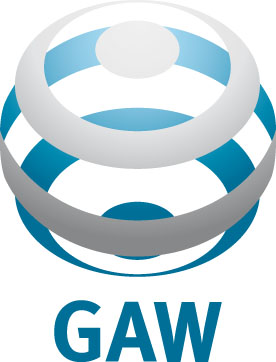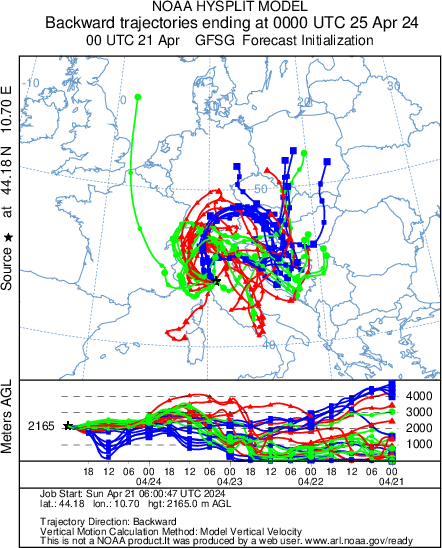Short-Lived Climate Forcers
Gases and aerosol particles that are emitted into or formed within the atmosphere remain there for longer or shorter periods depending on their physical and chemical properties. By the words “short-lived climate forcers” (SLCF), we refer to any atmospheric compound able to exert a climate forcing by modifying the energy budget of the atmosphere, but having a shorter lifetimes than carbon dioxide (100 years or more). Black carbon, aerosol particles and tropospheric ozone (having atmospheric life-time of the order of weeks) or methane, which has a lifetime of about 10 yr, are recognized as SLCFs. Some SLCFs are also dangerous air pollutants, with various impacts on human health, agriculture and ecosystems: for these reasons some of their (black carbon and ozone) are also referred at Short-Lived Climate Pollutants (SLCPs). SLCFs include some hydrofluorocarbons (HFCs). While HFCs are present in small quantity in the current atmosphere, their contribution to climate forcing is projected to increase in the near future. It has been assessed that reducing SLCF/SLCP emissions can lead to immediate climate and social benefits, especially at regional scale. This obviously does not mean that we are allowed to do not act to reduce the emissions of “long-lived” climate forcers like carbon dioxide. For more info on SLCFs please visit the UNEP/CCAC web site.
In the framework of the Global Atmosphere Watch (GAW) programme of the World Meteorological Organization (WMO) and Aerosol, Clouds, and Trace gases Reseracj InfraStructure (ACTRIS-2) , thanks to the collaboration between CNR-ISAC and Urbino University, systematic and reliable long-term observations of SLCFs/SLCPs are carried out at ICO-OV: surface ozone (O3, since 1996), methane (CH4, since 2008), halogens (HFCs, since 2002), black carbon (since 2005).
Monthly means of O3 and BC at ICO-OV for the years 2007, 2008 and 2009. The error bars denote the average expanded uncertainties with p<95 %
Black carbon (BC) is produced by incomplete combustion of fossil fuel and biomass: industry, diesel cars and trucks, residential stoves, open fires (agricultural open burning and forest fires). It has a direct warming impact on atmosphere and when deposited on ice and snow, can exacerbate atmospheric warming and cryosphere melting rate. At Mt. Cimone, the BC annual cycle is characterised by the presence of a winter minimum and maximum in spring and late summer. This behaviour probably reflects the higher efficiency of air-mass uplift during warmer months and the subsequent transport of pollution from the boundary layer to the measurement site.
Seasonal O3 averages measured at Mt. cimone for 1991-2011. The solid lines indicate quadratic regressions for the entire data sets.
Tropospheric ozone is the third most important greenhouse gases (after CO2 and CH4) for its anthropogenic impact on Earth's climate. It has a lifetime of a few days to a few weeks. It is not directly emitted but formed in the atmosphere by photochemical reactions involving sunlight and precursor species: methane (CH4), carbon monoxide (CO), non-methane volatile organic compounds (NMVOCs) and nitrogen oxides (NOx). Tropospheric ozone is a harmful pollutant that has detrimental impacts on human health and vegetation: it is responsible for important reductions in crop yield. At ICO-OV, the annual O3 cycle is characterised by a winter minimum and two peaks: in spring and in summer. This is a common feature for high-altitude measurement sites in Europe. The summer peak is usually explained by increased photochemical production of O3 in the lower troposphere: summer fair and warm weather conditions contribute to direct O3 production from anthropogenic precursors and favour the export of polluted air masses from the boundary layer to the free troposphere of continental Europe. At middle latitudes in the Northern Hemisphere, the spring maximum can be related to the accumulation of precursors during winter and subsequent production. Stratospheric intrusions play also an important role in autumn-spring. According to our investigation, open fire emissions appeared to have a significant contribution to ozone and black carbon during specific transport events.
Time series of O3 and CO (blue and red dots, upper plate), BC and fine particle volume (black and green dots, bottom plate), observed during transport of pollution from Po Basin (grey bars) and advection of open fire plumes from northen Africa (red bar) on 29–30 August 2007
Selected references Sandrini S, et al. 2014: Spatial and seasonal variability of carbonaceous aerosol across Italy, Atmos. Environ., 99, 587–598. Cristofanelli P, Scheel H-E, Steinbacher M, Saliba M. 2014: Long-term surface ozone variability at Mt. Cimone WMO/GAW global station (2165 m a.s.l., Italy), Atmos. Environ., 101, 23-33. Cristofanelli P, Fierli F, Marinoni A, Calzolari F, Duchi R, Burkhart J, Stohl A, Maione M, Arduini J, Bonasoni P. 2013: Influence of biomass burning and anthropogenic emissions on ozone, carbon monoxide and black carbon at the Mt. Cimone GAW-WMO global station (Italy, 2165 m a.s.l.), Atmos. Chem. Phys., 13, 15–30. Cristofanelli P, Bonasoni P. 2008: Background ozone in the southern Europe and Mediterranean area: influence of the transport processes, Environ. Poll., 157, 1399–1406.




